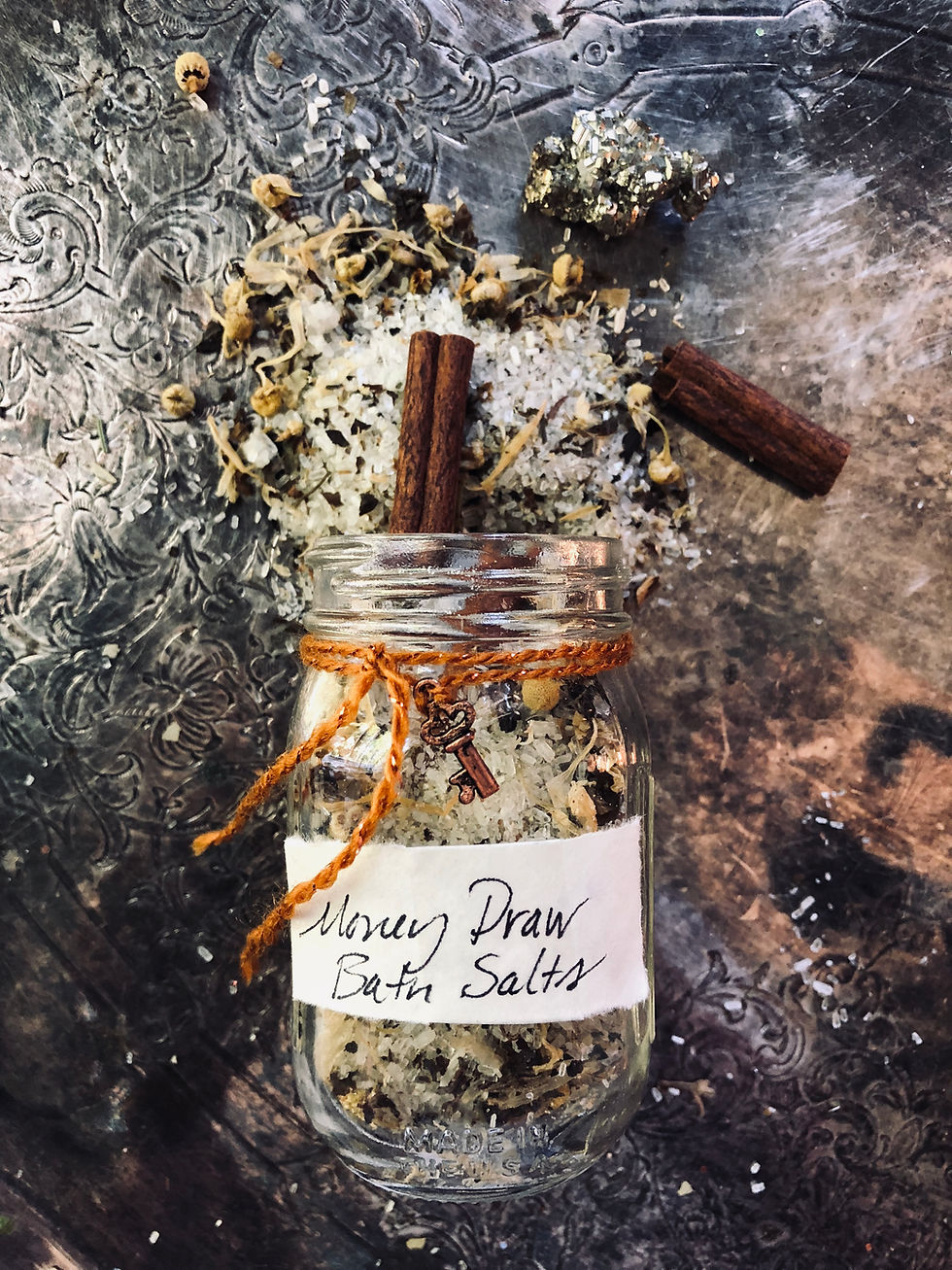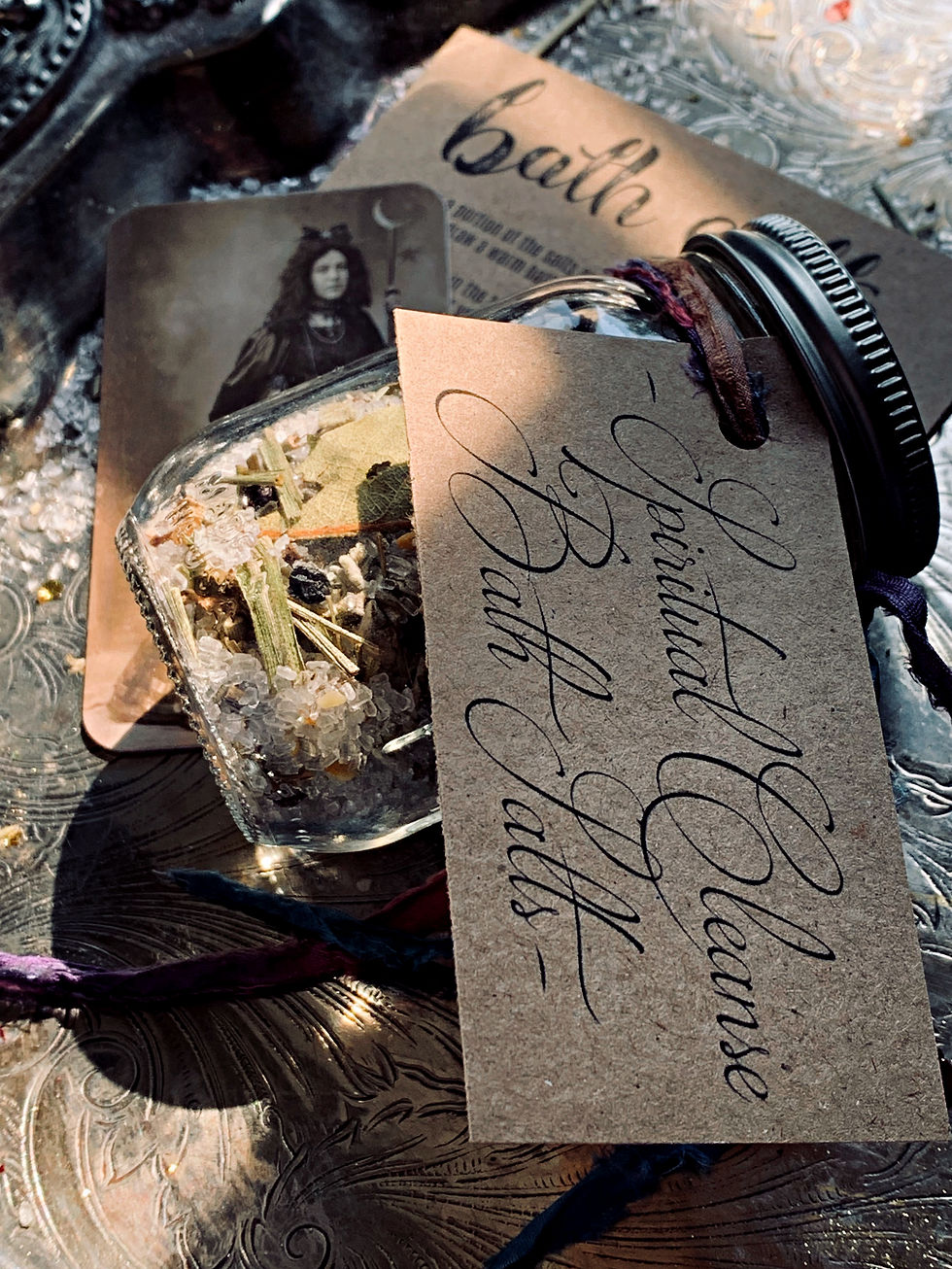St Benedict Healing Oil- Protector from witchcraft, illness, and sickness, heal the sick.
This oil is Naturally magical, powerfully enchanting, simply divine, created with frankincense, holy soil from Bethlehem. Scented with frangipani. A flower from the Pagoda tree (revered in India as the Tree of Life), frangipani epitomizes Sacred Perfection; its mesmerizing scent stimulates the unobstructed flow of benevolence, mercy, and goodness into one's life to shower blessings upon the soul. And Peridot chips bring joy, health, wealth, and happiness.
The St. Benedict medal is one of the most famous medals in the church. It commemorates St Benedict working miracles through The Sign of the Cross. The medal has a special exorcism blessing against all things coming from the devil and evil spirits. It also has a special blessing for the sick and a prayer for protection from every kind of calamity. The devil can’t stand being near this medal.
Pope Benedict XIV solemnly approved and recommended the use of the medal to the faithful in 1742.
The medal in current use is the Jubilee medal designed by the monk Desiderius Lenz, of the Beuron Art School. He designed it in 1880 for the 1400th anniversary of the birth of St. Benedict under the supervision of the prior of Montecassino, Very Rev. Boniface Krug (1838-1909) of Monte Cassino, Italy. Monte Cassino was given the exclusive right to strike this medal, with which special Jubilee indulgences were attached. The Jubilee Medal was first produced at St. Martin's Archabbey, Beuron, Germany, at the request of Prior Boniface who was a native of Baltimore and originally a monk of St. Vincent Archabbey, Latrobe, Pennsylvania, until he was chosen to become prior and latter archabbot of Monte Cassino.
Though laypeople, and most priests, are forbidden to conduct exorcisms, they are permitted to use the St. Benedict Medal to ward off evil. One is allowed to:
- wear the medal around the neck;
- attach it to one's rosary;
- kept in one's pocket or purse;
- attach it to one's keychain;
- affixed to one's car or home;
- placed in the foundation of a building;
- affixed to the center of a crucifix, usually behind the corpus.
According to Dom Gueranger, the medal is considered effective in:
- asking for inner peace/spiritual healing;
- asking peace between individuals or between nations of the world;
- curing bodily afflictions especially as protection against contagious diseases;
- destroying the effects of witchcraft and all other diabolical and haunting influences;
- healing those who are suffering from wounds or illness;
- obtaining the conversion of sinners, especially when they are in danger of death;
- offering protection against storms and lightning;
- protecting children from nightmares;
- protecting a mother and her children during childbirth;
- protecting animals infected with plague or other maladies;
- protecting fields infested by harmful insects;
- protecting or otherwise counter the effects of poison;
- protecting those persons who are tempted, deluded or tormented by evil spirits.
St. Benedict medal may be blessed by any bishop, abbot, priest or deacon, not necessarily a Benedictine (Instr., 26 Sept. 1964; Can. 1168). However, I was on a quest, and I can be pretty obstinate when I want to be. I wanted medals that had been specifically blessed/exorcised by the Abbot of the Monastero di San Benedetto in Norcia. I was in Umbria doing research for a novel I'm writing and wanted to make sure I saw Norcia. This monastery is located near the ruins of the house where St. Benedict and his sister St. Scholastica lived.
The power of the Medal of St. Benedict
St. Benedict was the father of Western monasticism. He was born in Nursia, Italy, in 480. Beginning in 520, he founded twelve monasteries in the region of Subiaco. The foundation at Monte Cassino (529) became the cradle of his Order. His twin sister was St. Scholastica. Benedict died on March 21, 542.
St. Benedict had a profound veneration for the Holy Cross and for our Saviour Crucified. In virtue of the sign of the Cross, he wrought many miracles and exercised great power over the spirits of darkness. In consequence of the great veneration in which St. Benedict was held from the early Middle Ages, it followed that a medal was struck. His medal has exceptional powers against the demons of Hell.
The medal of Saint Benedict is one of the sacramentals of the Church. The value and power of the medal must be ascribed to the merits of Christ Crucified, to the efficacious prayers of St. Benedict, to the blessing of the Church, and especially to the faith and holy disposition of the person using the medal.
The front of the medal shows St. Benedict holding a cross in one hand and the book of his Rule in the other. Flanking him on either side are the words: Crux S. Patris Benedicti (The Cross of the Holy Father Benedict). Below his feet are these words: Ex S M Casino MDCCCLXXX (From the Holy Mount of Cassino, 1880). On that date, Monte Cassino was given the exclusive right to produce this medal.
Inscribed in the circle surrounding Benedict are the words: Ejus in obitu nostro presentia muniamur (May his presence protect us in the hour of death).
The other side of the medal is where the real exorcistic force reveals itself. In the center is the Cross. Benedict loved the Cross and used it to drive away demons.
The vertical beam of the Cross has five letters: C.S.S.M.L., meaning Crux Sacra Sit Mihi Lux (May the holy Cross be for me a light). The horizontal beam of the Cross also has five letters: N.D.S.M.D., meaning Non Draco Sit Mihi Dux (Let not the dragon be my guide).
The four large letters at the angles of the Cross: C.S.P.B. stand for Crux Sancti Patris Benedicti (The Cross of the Holy Father Benedict).
Encircling the Cross in a circle around the right margin are these letters V.R.S.N.S.M.V., meaning Vade retro Satana; nunquam suade mihi vana (Begone Satan! Suggest not to me thy vain things).
Around the left margin of the circle are these letters: S.M.Q.L.I.V.B., meaning Sunt mala quae libas; ipse venena bibas (The drink you offer is evil; drink that poison yourself). At the top of the circle is the word PAX (Peace).
No special way of carrying or applying the medal is prescribed. It may be worn around the neck, attached to the Scapular or the Rosary, or simply carried in one’s pocket.
Often it is placed in the fields, the foundations of buildings, or attached to automobiles to call down God’s blessing and the protection of St. Benedict. No particular prayer is prescribed, as the devout wearing itself is a continual silent prayer.

























